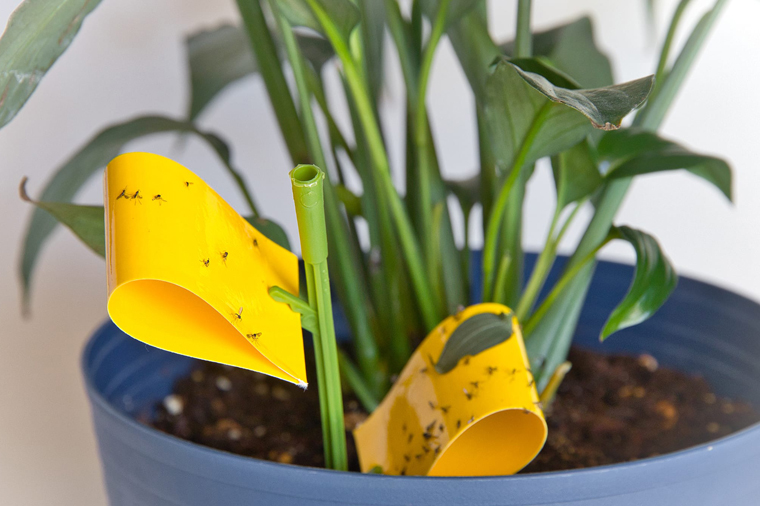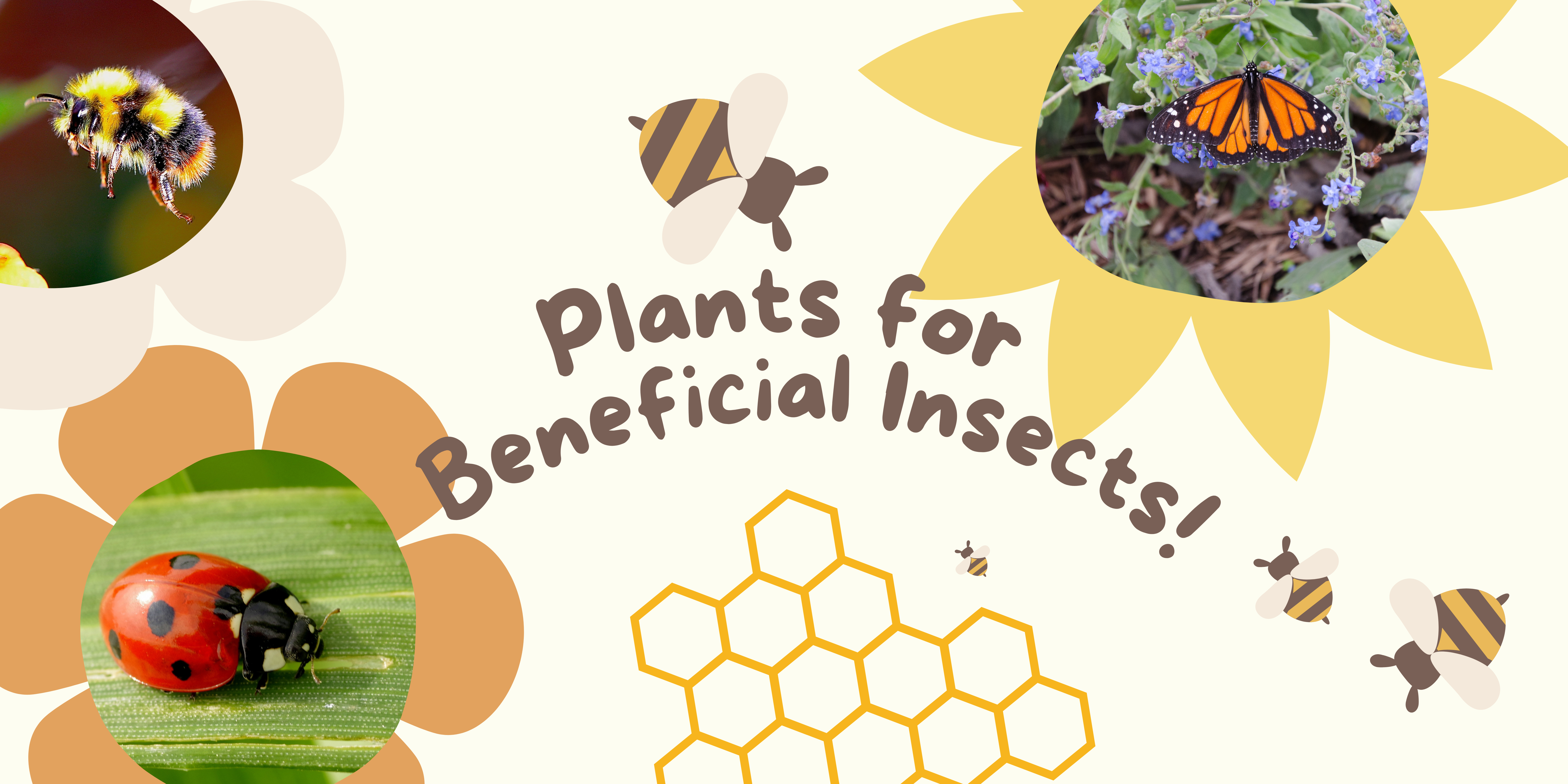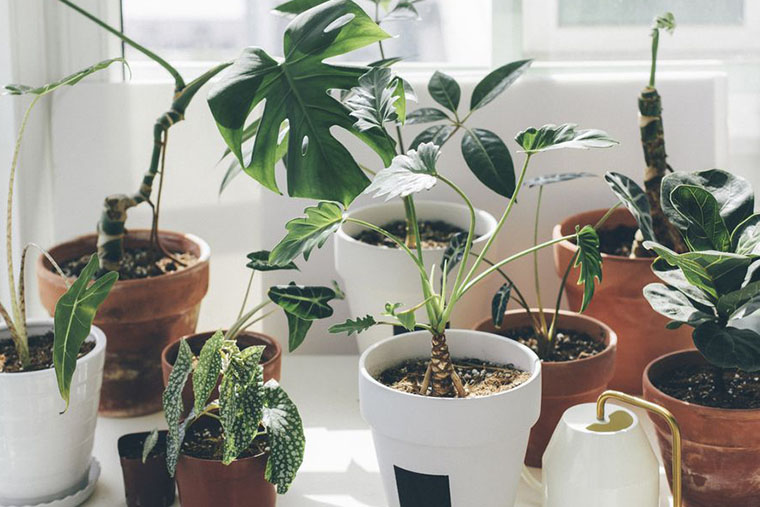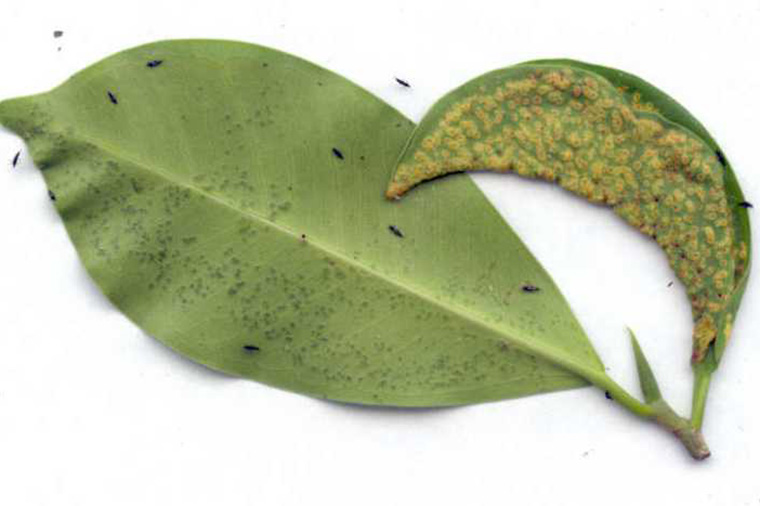What Are Fungus Gnats?

Most houseplant lovers would probably agree that fungus gnats are the bane of their existence. Those tiny pests seem to find their way into every home to take up residence in their beloved plants and they are nearly impossible to keep out. At some point or another, every plant parent will have to deal with the dreaded fungus gnat… here’s what we know.
Fungus gnats are actually very small flies, usually between 1/8-inch to 1/4-inch in length, that are drawn to moist potting soil and decaying plant matter in the pots of indoor plants.
Adult fungus gnats can lay up tp 200 eggs in moist soil near the surface of a potted plant. After about 3 days, the eggs will become larvae which burrow into the soil to feed on fungi and other decaying matter within the soil. If numbers are high enough, they will also feed on the roots of a plant, causing notable damage. Two weeks later, adult fungus gnats emerge from the soil and the cycle repeats. If left unchecked, their population can quickly explode to become an infestation that’s even harder to eradicate. As soon as fungus gnats are spotted, it’s time to take action.
Fungus gnat damage will appear similar to that of any other root-related issue, such as root rot. Lower leaves may turn yellow and drop, and the plant’s growth may slow down or stop completely. In particularly bad cases, wilting of the entire plant could occur, followed by the death of the plant if roots are extremely damaged.
How to Manage Fungus Gnats
Keep the Soil Dry
Since fungus gnats need moist soil to lay their eggs, the best way to prevent numbers from growing is to keep the top few inches of soil dry. Try and water less often and be mindful to not overwater. Make sure pots have good drainage and allow the soil to dry out between waterings, eggs and larvae will usually die in dry soil. When watering is needed, bottom watering can help get moisture to the roots while keeping the soil tops dry, discouraging adult fungus gnats from laying their eggs.
Use Sticky Traps
An easy measure to prevent adults from laying more eggs is to trap them. Yellow sticky traps positioned near the soil are the most effective traps for fungus gnats. Keep an eye on your traps and replace them as needed. Also make a note as to which plants seem to have more gnats, this will help you determine if you are overwatering those plants.
Use Fermented Traps
Another favourite are fermented traps. Fermented traps are an easy DIY trap that can be made using a shallow container with equal parts water and either wine or apple cider vinegar and a few drops of dish soap. Traps can be placed near affected plants or even inside the pot of larger plants. Be sure to check the trap regularly and replace as needed.
Mosquito Dunks
For particularly difficult infestations you can try Mosquito dunks. They are pellets containing a beneficial bacteria called Bacillus thuringiensis subspecies isrealensis. This beneficial bacteria infects and kills the larvae of flying insects, including mosquitoes, fruit flies, and fungus gnats. To use mosquito dunks you will need to fill a gallon jug or large watering can with clean water and allow the mosquito dunk to soak in the water overnight. Remove the remaining dunk which can be reused next time and use that water for watering your houseplants. Mosquito dunks would work really well when bottom watering in plant baths, especially if you have a lot of plants to treat. This bacteria, while deadly to the larvae, will not harm your plants and this process can be repeated each time you water until your infestation is completely eradicated.
Stay Vigilant
While fungus gnats are difficult to eradicate, it’s not impossible. The main thing is to keep vigilant while remaining mindful of their life cycle. A measured and consistent approach will eventually win every time.
 |
| 



